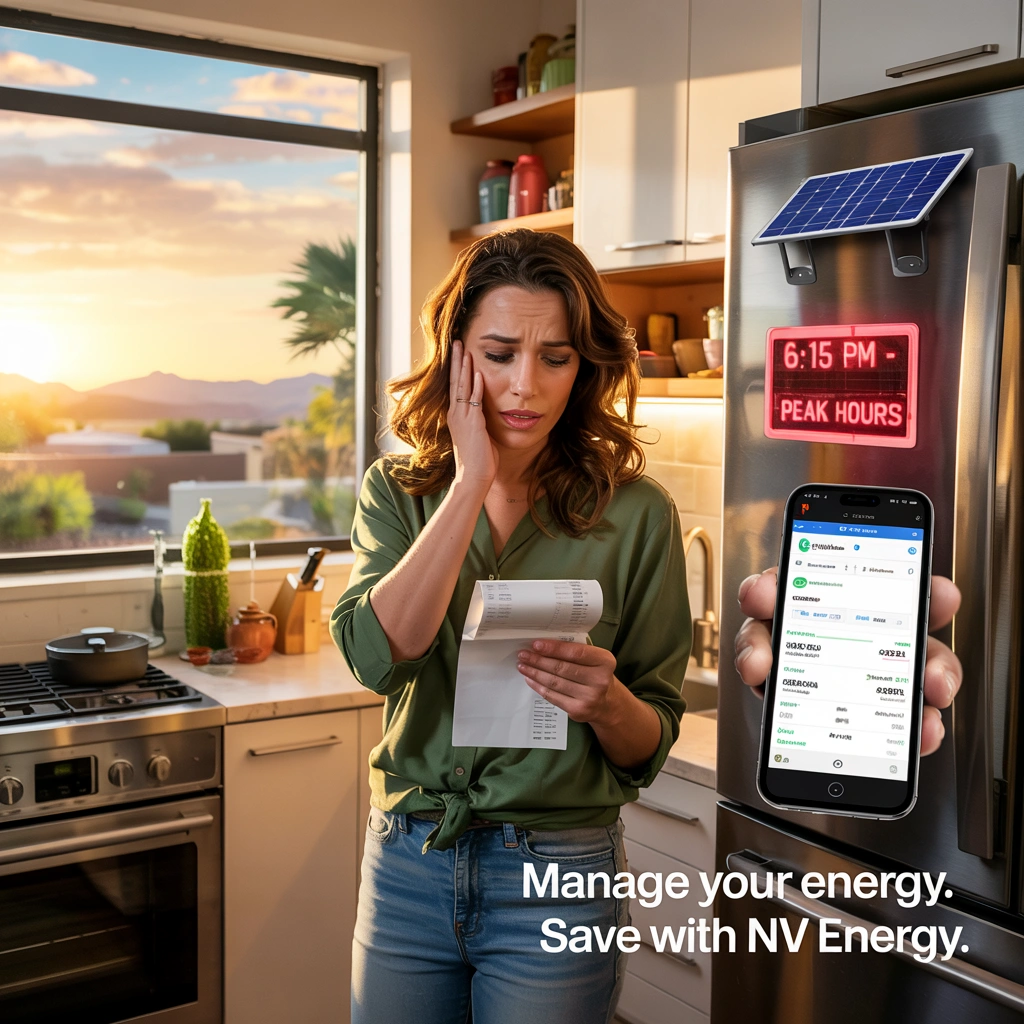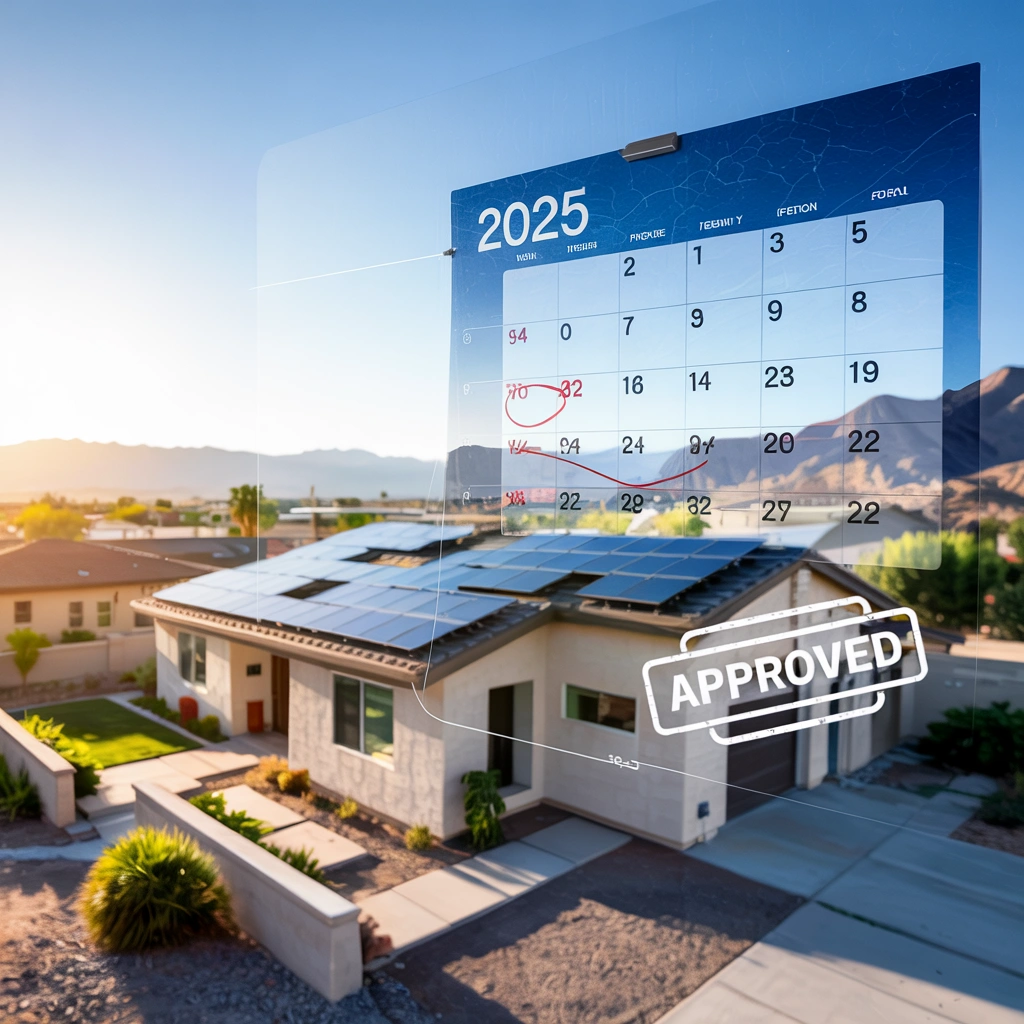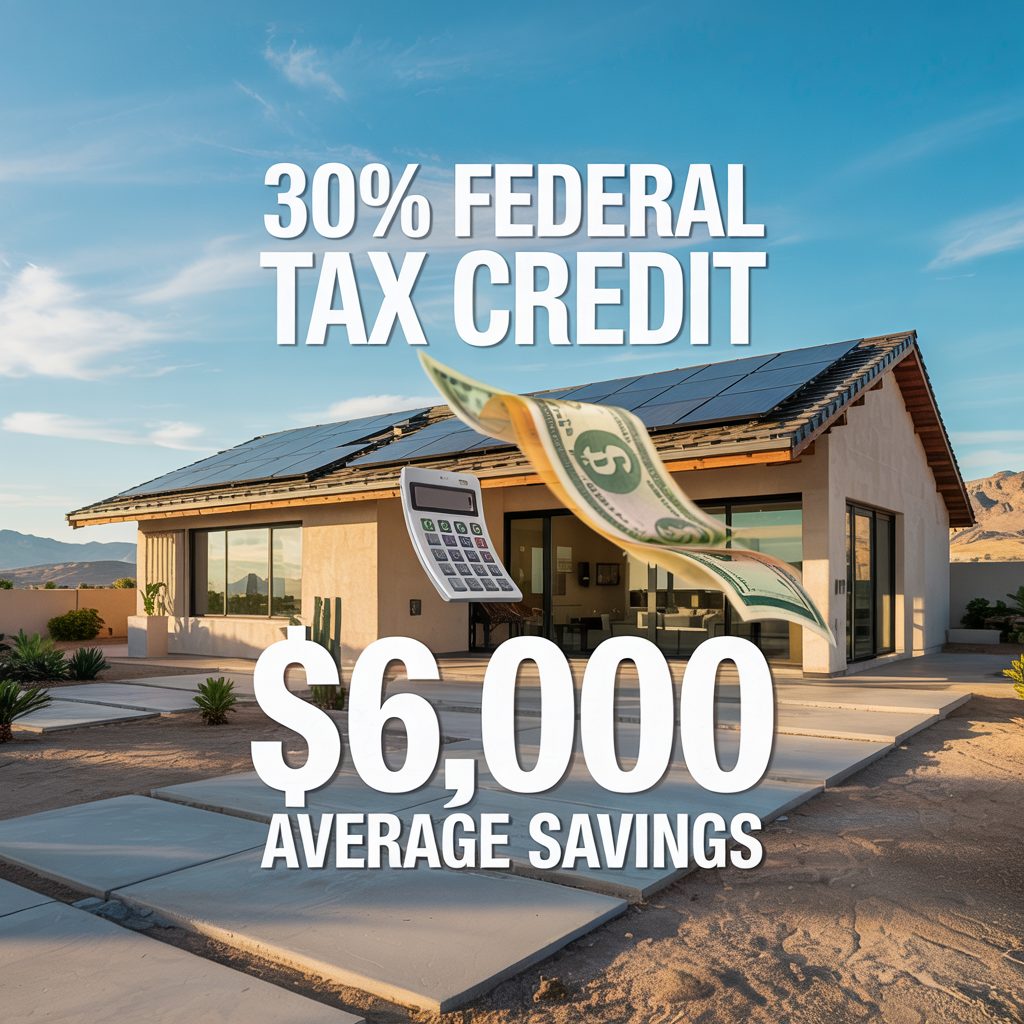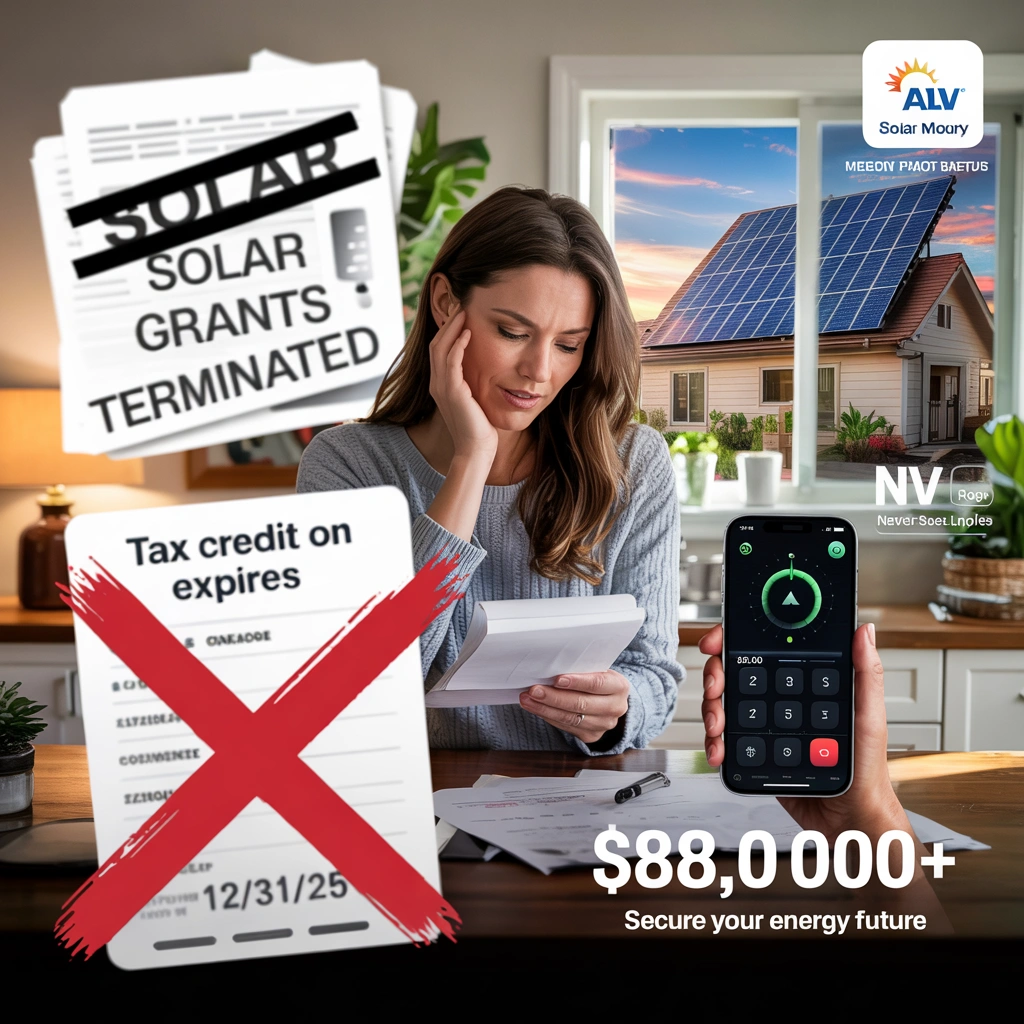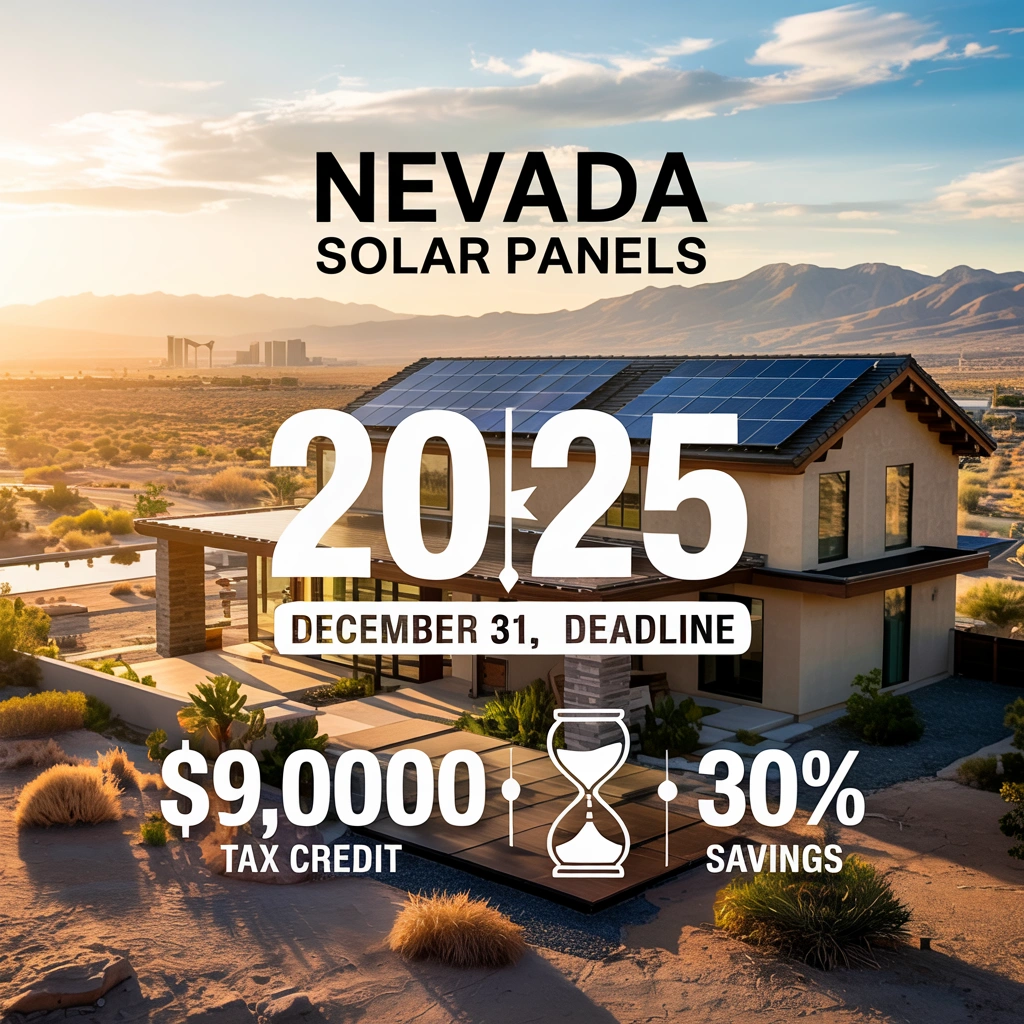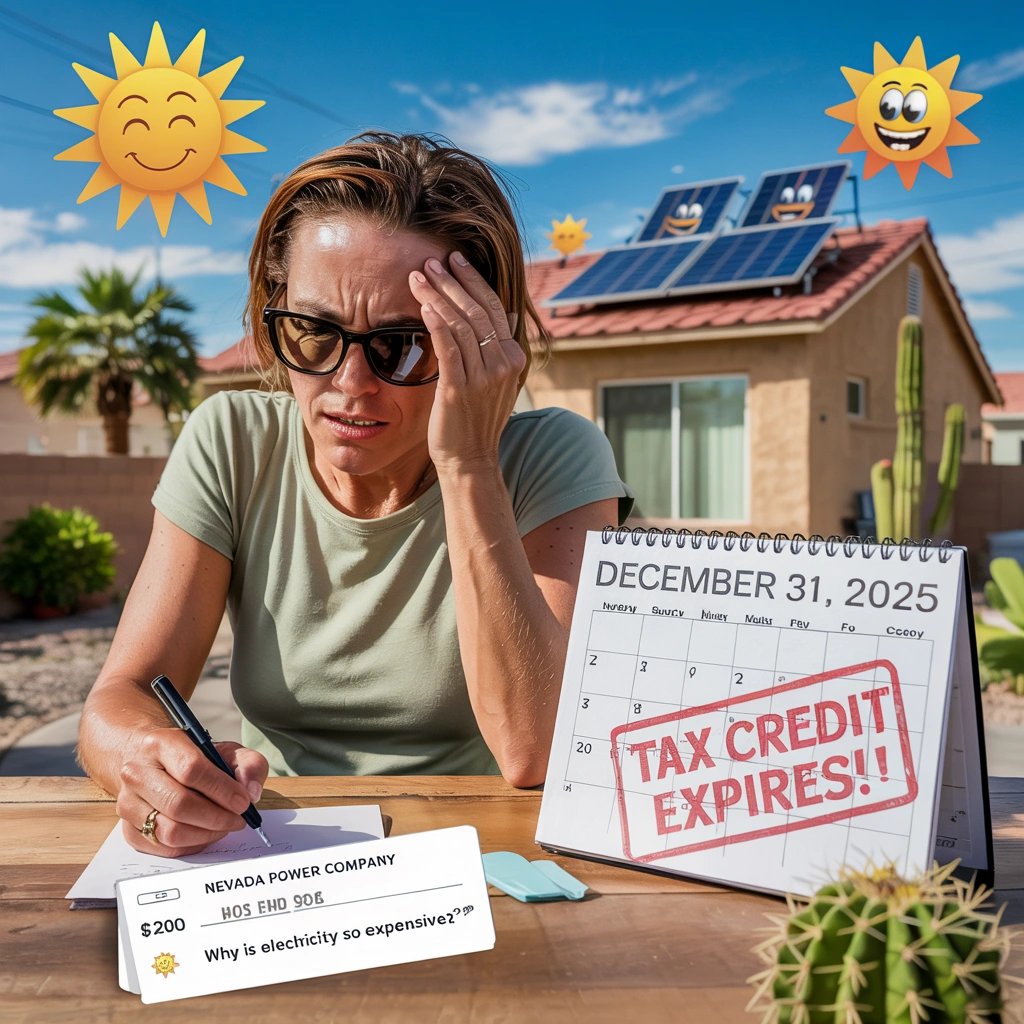Will NV Energy’s Time-of-Use Plan Increase My Electricity Bill?
Summary: Are you prepared for NV Energy’s mandatory demand charges starting April 2026 that could add $20-$38 to every Southern Nevada electricity bill? Your current rate plan won’t protect you from this fundamental billing change. PodCast: Discover whether NV Energy’s Time-of-Use plans will save or cost you money, plus what the mandatory demand charges starting in 2026 mean for Southern Nevada homeowners. Key Takeaways NV Energy’s Time-of-Use plans can lower bills for flexible households but may increase costs for traditional 9-to-5 families who use most electricity during peak hours New mandatory demand charges start April 16, 2026, adding an estimated $20-$38 monthly to Southern Nevada bills regardless of your rate plan Electric vehicle owners and solar customers with battery storage typically see the biggest savings on Time-of-Use plans Demand charges are calculated differently than traditional billing – they’re based on your highest 15-minute usage spike each day, not total consumption Solar panels alone won’t protect against demand charges, but battery systems can help reduce peak usage spikes Southern Nevada homeowners face a confusing maze of electricity billing options. NV Energy’s Time-of-Use plans promise savings for some families while potentially raising costs for others. Meanwhile, new demand charges are looming on the horizon, threatening to…
Deadline Checklist: Getting Your Nevada Solar Loan Approved Before 2026
Summary: Nevada homeowners have until December 31, 2025, to lock in the full 30% federal solar tax credit—but getting loan approval could take longer than you think, and waiting could cost you thousands. Key Takeaways The federal solar tax credit drops from 30% to 26% after December 31, 2025, costing Nevada families up to $1,600 on a typical $40,000 solar system Solar loan requirements include credit scores of 580+ minimum (720+ for best rates), steady income verification, and debt-to-income ratios below 43% Complete loan applications with all documents move through approval in 1-3 weeks, but installation backlogs could push projects past the December 2025 deadline Alternative financing options like home equity loans and solar lease programs exist for families who don’t qualify for traditional solar loans Starting applications now secures better terms before lending standards tighten as the deadline approaches Nevada Solar Loans Get Harder After December 2025—Start Now or Lose Thousands Nevada homeowners face a critical deadline that will directly impact their solar financing options and long-term savings. The federal Residential Clean Energy Credit drops from 30% to 26% on January 1, 2026, representing real money lost for families considering solar installation. On a typical Nevada solar system costing $40,000, this reduction…
What the Nevada “Solar for All” Grant Termination Means for Your Family’s Energy Bills
Summary: Nevada just terminated a $156 million solar program that would have helped 50,000 families slash their energy bills—but if you act fast, there’s still a way to save thousands before these remaining opportunities disappear forever. Key Takeaways Nevada’s $156 million Solar for All grant termination pauses efforts to help 50,000 families who were counting on subsidized solar power to reduce energy bills The EPA terminated the program through federal legislation, leaving families with fewer options for affordable solar installation Nevada families can still access a 30% federal tax credit for solar systems installed before December 2025, though this credit expires at year-end Alternative energy-saving measures like heat pumps and smart home systems offer immediate bill reductions without government assistance Several solar incentive programs remain available, but quick action is essential to maximize savings before deadlines The termination of Nevada’s Solar for All grant represents a significant setback for families struggling with rising energy costs. While this program would have helped thousands of households access affordable solar power, alternative pathways to energy savings still exist for those willing to act quickly. 50,000 Nevada Families Lost Solar Savings Opportunity Nevada’s Solar for All program would have transformed energy affordability for families across the state.…
How to Calculate Your 2025 OBBB Solar Tax Credit for a Las Vegas Home.
How to Calculate Your 2025 Federal Solar Tax Credit for a Las Vegas Home Summary: Las Vegas homeowners have until December 31, 2025 to claim a 30% federal solar tax credit worth thousands of dollars—but there’s a specific calculation method and strict requirements you need to know to maximize your savings. Key Takeaways: Las Vegas homeowners can claim 30% of their solar installation costs as a federal tax credit in 2025 by completing IRS Form 5695 and meeting specific eligibility requirements. The federal solar tax credit ends December 31, 2025, due to the One Big Beautiful Bill (OBBB), making this the final opportunity to claim this substantial savings. A typical 6kW solar system costing $18,000 in Las Vegas results in a $5,400 tax credit, reducing the actual investment to $12,600. Battery storage systems also qualify for the same 30% credit when paired with solar installations. Nevada’s net metering program provides additional ongoing savings beyond the one-time federal tax credit. The clock is ticking for Las Vegas homeowners considering solar panel installation. The federal government’s 30% Residential Clean Energy Credit represents thousands of dollars in tax savings, but this opportunity disappears forever on December 31, 2025. With Las Vegas receiving approximately 310 sunny days…
Beyond the Tax Credit: How AI, Terminated Grants, and Your Utility Bill Make Solar an Essential Long-Term Investment
Summary: Nevada’s new utility demand charges could add $27-$38 to monthly bills starting April 2026, but AI-powered solar systems are now delivering 25-35% cost reductions through predictive maintenance. Here’s how the math is changing for homeowners. Key Takeaways: Despite the termination of Nevada’s solar grant programs and federal tax credit changes, solar investment remains financially sound due to falling equipment costs and rising utility rates AI-powered solar systems now offer smart energy management, predictive maintenance, reducing costs by 25-35%, and real-time optimization that adapts to environmental conditions NV Energy’s April 2026 demand charges may add $27-$38 monthly to utility bills, making solar’s peak-hour generation even more valuable Nevada homeowners can save approximately $40,000 over their solar system’s 25-30 year lifetime, with protection against escalating utility rates Strategic timing and expert guidance help homeowners navigate complex solar decisions while avoiding costly mistakes Nevada homeowners face a challenging landscape: government solar programs disappearing, federal tax credits changing, and utility bills climbing relentlessly. Yet this environment reveals why solar has evolved beyond dependence on government incentives into a robust, technology-driven investment opportunity. The fundamentals driving solar value—artificial intelligence optimization, predictive maintenance systems, and protection against rising electricity costs—create compelling economics that persist regardless of political changes.…
The New Nevada Solar Tax Credit Deadline: An Urgent Guide for Reno & Las Vegas Homeowners.
Summary: The federal solar tax credit ends permanently on December 31, 2025—no phase-down, just gone. Nevada homeowners can save over $3,000 on installations, but with new net metering changes and permit delays, October bookings might be your last realistic chance. Key Takeaways: The federal solar tax credit, providing 30% savings on solar installations, ends permanently on December 31, 2025, with no phase-down period Nevada homeowners in Reno can save $3,355 on a typical 5kW system, while Las Vegas residents benefit from similar substantial tax credit reductions NV Energy’s Tier 4 net metering now offers 75% of retail rates for excess solar power, with proposed changes to 15-minute intervals affecting payback calculations Installation must be completed and operational by December 31, 2025, requiring homeowners to book by October 2025 to help ensure eligibility Nevada has implemented specific scam protection measures through the Solar Investigations Unit due to increased fraudulent activity during the rush period before the deadline Nevada homeowners face a critical decision point as the federal solar Investment Tax Credit approaches its final deadline. Unlike previous transitions that included gradual reductions, this credit ends abruptly after December 31, 2025, eliminating the 30% federal tax benefit that has made solar installations significantly more affordable for…
The Ultimate Guide to Solar Financing & Incentives for Las Vegas Homeowners
Summary: Las Vegas homeowners have just months left to capture a massive 30% federal tax credit worth up to $5,102 before it expires forever on December 31, 2025—but there’s a crucial timing factor most don’t realize. Key Takeaways The 30% federal tax credit expires December 31, 2025, potentially saving Las Vegas homeowners $3,263 to $5,102 on typical solar systems Four main financing options exist: cash purchase, solar loans, leases, and PPAs—each offering different benefits and long-term savings Zero-down solar programs are available with monthly payments often lower than current electricity bills NV Energy’s net metering offers 75% retail credit rates locked for 20 years for existing customers, though changes may be coming Solar installation typically takes 2-6 months, making immediate action necessary to capture 2025 incentives 30% Federal Tax Credit May Expire December 31, 2025 — Las Vegas Homeowners Can Cut Energy Bills Starting Day One Las Vegas homeowners face a time-sensitive decision window. The 30% federal Investment Tax Credit (ITC) expires after December 31, 2025, with no extension planned. This represents the largest single incentive available for residential solar installations, potentially saving thousands of dollars that will disappear forever in just months. For a typical 5kW system costing $10,875 before incentives, the…
